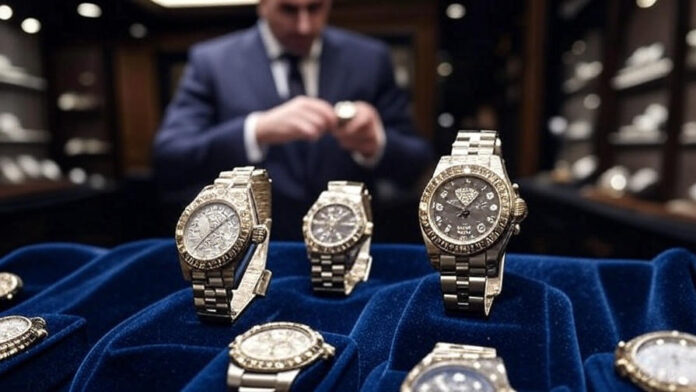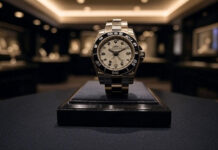The luxury watch market has long been a symbol of prestige, craftsmanship, and exclusivity. Brands like Rolex have set the gold standard for horology, with their timepieces coveted by collectors and enthusiasts worldwide. However, the rise of counterfeit watches, particularly rolex replica models, has cast a shadow over the industry, raising concerns about authenticity, consumer trust, and the broader implications for luxury goods markets.
The Surge of Counterfeit Watches
In recent years, the production and distribution of counterfeit luxury watches have surged, fueled by advancements in manufacturing technology and the global reach of e-commerce. High-quality replicas, often referred to as “super fakes,” have become increasingly difficult to distinguish from genuine Rolex watches. These counterfeit timepieces mimic the design, weight, and even the intricate details of authentic models, making them a significant challenge for both consumers and the industry.
According to a 2024 report by the Organization for Economic Cooperation and Development (OECD), the global trade in counterfeit goods reached an estimated $500 billion annually, with luxury watches being one of the most commonly replicated items. The proliferation of these fakes has been particularly pronounced in online marketplaces, where sellers can operate with relative anonymity. For example, websites offering rolex replica watches have grown in number, often marketing their products as near-identical to the originals.
The Impact on Consumers
For consumers, the allure of owning a Rolex at a fraction of the cost can be tempting. A genuine Rolex Submariner, for instance, retails for upwards of $10,000, while a replica can be purchased for as little as $200. However, the risks associated with buying counterfeit watches are significant. Beyond the obvious financial loss of purchasing a fake, consumers may face legal repercussions in some jurisdictions where knowingly purchasing counterfeit goods is prohibited.
Moreover, the quality of replicas, while improved, cannot match the craftsmanship of authentic Rolex watches. Counterfeit timepieces often suffer from inferior materials, unreliable movements, and a lack of durability, leading to disappointment for buyers expecting a luxury experience. In some cases, these fakes are sold under deceptive pretenses, with buyers unaware they are purchasing a counterfeit until it is too late.
Rolex’s Response to the Counterfeit Crisis
Rolex, a brand synonymous with precision and heritage, has taken a proactive stance against counterfeiting. The company invests heavily in anti-counterfeiting measures, including advanced authentication technologies and collaboration with law enforcement agencies worldwide. Rolex’s proprietary features, such as its Cyclops lens and laser-etched crown logo, are designed to be difficult to replicate, though counterfeiters have become increasingly adept at mimicking these details.
In 2023, Rolex partnered with international customs agencies to seize thousands of counterfeit watches at borders and ports. The company also works closely with online platforms to shut down listings for fake Rolexes, though the sheer volume of these listings makes it a challenging task. A spokesperson for Rolex emphasized the company’s commitment to protecting its brand, stating, “Our priority is to ensure that customers can trust the authenticity of every Rolex watch they purchase. Counterfeiting undermines not only our brand but the entire luxury goods industry.”
The Role of Technology in Combating Fakes
Advancements in technology are playing a dual role in the counterfeit watch market. On one hand, they enable counterfeiters to produce more convincing replicas. On the other, they provide tools for brands and consumers to verify authenticity. Blockchain technology, for example, is being explored by some luxury brands to create tamper-proof digital certificates of authenticity. These certificates can be linked to a specific watch, allowing buyers to verify its provenance with a simple scan.
Rolex has yet to publicly adopt blockchain for authentication, but industry experts speculate that the company may integrate such technologies in the future. In the meantime, authorized dealers and certified watchmakers remain the most reliable sources for purchasing genuine Rolex timepieces. Experts advise consumers to avoid deals that seem too good to be true and to always verify the seller’s credentials.
The Broader Implications for the Luxury Market
The rise of Rolex replicas is not an isolated issue but part of a broader challenge facing the luxury goods industry. Counterfeit handbags, jewelry, and clothing are also prevalent, eroding consumer confidence and brand value. For luxury brands, the financial impact is substantial, with losses estimated in the billions annually. Beyond the financial toll, counterfeiting raises ethical concerns, as the production of fakes is often linked to organized crime and exploitative labor practices.
The luxury watch industry, in particular, relies on its reputation for exclusivity and craftsmanship. When counterfeit watches flood the market, they dilute this reputation and create confusion among consumers. For collectors, the presence of fakes can also depress the resale value of genuine timepieces, as buyers become wary of authenticity.
What Consumers Can Do
For those looking to invest in a luxury watch, education is key. Experts recommend purchasing only from authorized dealers or reputable resellers with a proven track record. Buyers should also familiarize themselves with the hallmarks of a genuine Rolex, such as the smooth sweeping motion of the second hand and the weight of the watch, which is typically heavier than a replica due to its high-quality materials.
Additionally, consumers can leverage professional authentication services offered by watchmakers and third-party experts. These services can provide peace of mind, especially when purchasing pre-owned watches from secondary markets. Reporting suspected counterfeits to authorities or platforms can also help curb the spread of fakes.
Looking Ahead
As the luxury watch industry continues to grapple with the counterfeit problem, collaboration between brands, governments, and technology providers will be crucial. Innovations in authentication and increased regulation of online marketplaces could help stem the tide of replicas. For now, the responsibility falls on consumers to remain vigilant and informed.
The allure of a Rolex watch lies not only in its aesthetic appeal but also in its legacy of craftsmanship and innovation. As counterfeiters become more sophisticated, the challenge for Rolex and its customers is to preserve the integrity of this legacy. By staying educated and cautious, watch enthusiasts can continue to celebrate the artistry of genuine luxury timepieces while supporting efforts to combat counterfeiting.
Conclusion
The issue of Rolex replicas underscores the broader challenges facing the luxury goods industry in an era of advanced technology and globalized markets. While counterfeit watches may offer a superficial appeal, they come at a steep cost to consumers, brands, and the integrity of the luxury market. Rolex’s ongoing efforts to combat counterfeiting, coupled with emerging technologies like blockchain, offer hope for a future where authenticity is easier to verify. However, the responsibility ultimately lies with consumers to make informed choices and support legitimate channels. By prioritizing education, vigilance, and ethical purchasing, watch enthusiasts can help protect the legacy of iconic brands like Rolex and ensure that the artistry of luxury horology endures for generations to come.



